
 |
 |
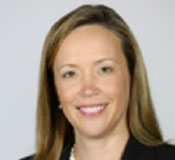 |
 |
Working together on the accountable care unit
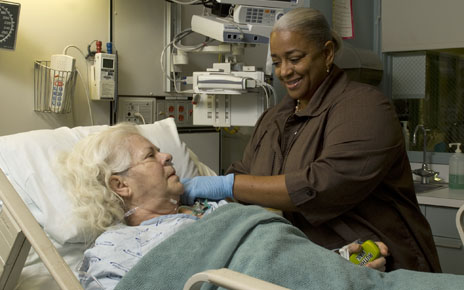 |
The old model of patient care: nurses and doctors, for the most part, worked independently of each other. The new model at Emory Healthcare: nurses and doctors spend their entire shift in the same unit, working side by side, and together are responsible for patient outcomes of the unit. Welcome to the accountable care unit (ACU).
ACUs have a set team of nurses and physicians that staff the unit and are managed jointly by a nurse and physician. The unit is responsible for its clinical, service, and cost outcomes.
For example, one clinical measurement, the rate of pressure ulcers, traditionally fell to nurses to manage and improve. On an ACU both nurses and physicians work together to prevent or manage patients' symptoms and reduce the rate for the unit.
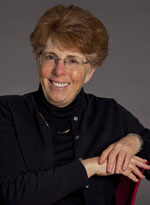 |
|
| Susan Shapiro | |
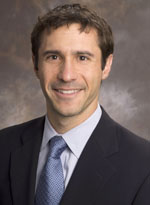 |
|
| Jason Stein |
The ACU model has been under way at Emory Healthcare for the past three years, and both physicians and nurses give the model high marks. "Employee engagement was blown out of the water," says Bryan Castle, RN, unit director for 6G at Emory University Hospital (EUH). "It's the first time in surveys that I've seen that 100% of the nurses felt like they had a collegial relationship with the physicians that they work with on the unit."
"We have real work relationships now," says hospitalist Jason Stein. "Everyone knows everyone and something about each other. We've had a lot of people observe our unit, and they often remark how quiet it is. Phones and pagers are used less—there's much more face-to-face. There's a certain calm and order."
Stein and Castle have teamed up with Susan Shapiro, system director of research and evidence-based practice in the nursing school, to advance the ACU model. Shapiro recently secured a three-year, $1.5 million grant from the Health Resources and Services Administration to evaluate the ACU model, train more staff nurses to lead unit-based teams, and develop a tool kit for other health systems on how to implement an ACU.
"We expect that the results of our robust evaluation will demonstrate the impact of the model on important clinical and system outcomes," says Shapiro. "This will provide direction for further scale-up models following the project's completion."
The Emory expansion is planned in two phases, bringing in three new ACUs in the grant's first year and four more in years two and three. Currently there are three ACUs at EUH, one at EUH Midtown, and one at Emory John's Creek Hospital. Read more.
Disclosure: Stein is the author of training materials for the care model described in this project that have been licensed to Centripital, a nonprofit company that he founded and serves as president. He could receive financial benefit from the licensing agreement. Stein also served as a paid consultant to the Clinical Excellence Commission of New South Wales on the care model. The terms of these arrangements have been reviewed and approved by Emory University in accordance with its conflict of interest policies.
Lab Land blog shares inside scoop on Emory biomedical research
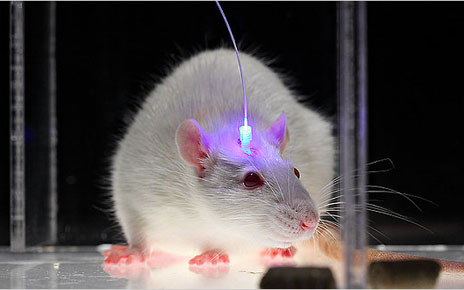 |
| A rat with a fiber-optic cable, which applies a laser signal to the brain to stimulate specific brain cells. Photo courtesy of Stanford University. Read the blog entry, Manipulating neurons with light. |
Emory's Health Sciences Communications office recently launched Lab Land, a blog highlighting tidbits about biomedical research at Emory.
The blog covers a wide range of topics, according to Emory science writer/blogger Quinn Eastman, who says Lab Land's focus is "explaining the world of neurons, viruses, DNA, and antibodies as well as how Emory research advances into the clinic."
Lab Land is designed to reach journalists and anyone else interested in biology or medicine. Science communications experts and some of Emory's peer research institutions have turned to blogs as an alternative to news releases, which are typically longer format and focus on announcements and breaking news.
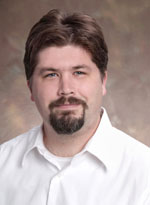 |
|
| Quinn Eastman |
"Press releases are not disappearing, but this is a different way to publicize research papers," says Eastman. "We can make note of national trends and explain how the work of Emory researchers fits into those trends or takes a different path. We can tell stories that wouldn't fit a press release format and wouldn't otherwise get told.
"With the blog, we can chime in on conversations that are taking place nationally and internationally," he adds.
As part of a group of Emory blogs, Lab Land joins eScience Commons, a university science blog, and Spirited Thinking, a religion blog.
"The media landscape for science journalism has been transformed over the past few years," Eastman says. "Many science-oriented blogs have emerged, often under the umbrella of respected national magazines. We want to reach the same audiences."
Lab Land has a minimum of two regular monthly features and incorporates images, videos, and explanations of scientific terms or concepts of current interest, such as "optogenetics" or "default mode network."
You can subscribe to this blog via email updates or RSS feed at Lab Land. Eastman plans to expand on the "Leave a comment" component to include guest posts/contributors. Please check out the blog, and join the conversation.
If you have an idea for a Lab Land blog post, please contact Eastman.
Expanding access to specialty services at Saint Joseph's
The Emory Clinic continues to expand and diversify services offered at Saint Joseph's Hospital (SJH), creating an outpatient infrastructure for a variety of surgical and other specialties. This effort expands access to patients in Atlanta's northern arc, in some instances filling a gap left when specialists previously at SJH aligned with other systems.
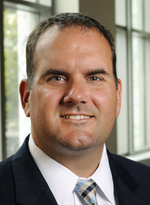 |
|
| Chris Rayburn |
Surgery administrator Chris Rayburn, for example, recently led a large, multi-faceted effort to implement outpatient and inpatient surgical services in urology and surgical oncology, assembling a team working under a tight time frame to ensure that the first patients would be seen by early summer.
"Each week, about 30 Emory Healthcare and Saint Joseph's employees from facilities management, human resources, telecommunications, nursing, surgery, and patient financial services met to coordinate this undertaking," he says. "We renovated space in medical office building 4 and are still in the process of adding staff." Several surgeons from Emory University Hospital (EUH) and EUH Midtown are redirecting their efforts to Saint Joseph's.
Other recent or planned expansions include the following:
- Cardiothoracic surgery: Expansion of CT surgery through a collaborative effort with Peachtree Cardiothoracic Surgeons is targeted for October.
- Transplant: Expansion of nonsurgical services in liver and kidney transplant is targeted for October.
- Hematology and medical oncology: Services were recently expanded in lymphoma, prostate cancer, hemophilia, and general hematology. SJH's newly renovated infusion center became part of EHC's provider network in April.
- Cardiology: Several physicians have been hired to lead expansion of various programs at SJH, with David Markham serving as Emory Clinic lead for heart failure services at SJH and Jim Stewart as lead for growth of Emory's transcatheter aortic valve replacement program at SJH. The Emory Clinic is looking for approximately 24,000 square feet on the SJH campus to house the cardiology services. The new space is expected to open in early 2014.
Meshing Saint Joseph's with Emory Healthcare
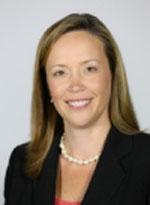 |
|
| Heather Dexter |
When Heather Dexter first joined Saint Joseph's Hospital 15 years ago, the hospital was part of Northeast-based Catholic Health Network. Saint Joseph's was a stand-alone facility in an Atlanta marketplace about to explode into competing networks. Dexter, who had just received dual master's degrees in both health and business administration, was given responsibility for numerous clinical and business operations, from ambulatory services to surgery and robotics, and honed her skills on such tasks as service-line planning, establishing joint ventures, implementing new revenue-generating programs and technology, and coordinating contract negotiations and business plan development.
When Saint Joseph's decided it needed a strong local partner, Dexter was tapped as executive project manager for the two-year process of either selling the hospital or finding a viable partner. Saint Joseph's officers did the actual negotiations; Dexter pulled together materials and plans and performed due diligence needed by a complex contingent of administrators, lawyers, investment bankers, accountants, and others involved in the talks—all the while continuing her service-line duties. She did it four times over, as four different hospitals or systems came to the table as potential partners.
Dexter knew immediately that Emory was the right one—a partner that shared her hospital's clinical excellence and compassionate service, with special attention to the poor and vulnerable.
After the partnership was finalized early in 2012, Dexter's job title immediately changed to VP of operations (the counterpart of COO in many hospitals), with responsibility for planning the transition of employees and clinical operations as Saint Joseph's was meshed with Emory Healthcare.
For the past 18 months, Dexter has been back to doing what she did historically: working with leadership, physicians, and staff to put plans into practice, most recently converting Saint Joseph's financial and clinical information systems into those of Emory Healthcare. Her Emory counterpart during negotiation and now implementation is Sonal Owings.
Equally important for both, says Dexter, is making sure the transitions are well accepted by physicians and staff and "that we are all moving to the point where we trust and collaborate with each other, where we feel that we are Emory Healthcare and are part of helping Emory Healthcare become the place where every patient wants to come, regardless of which hospital they're coming to."
Interacting with the people who actually provide and facilitate care is what she loves best. It's where her passion for health care was born during her personal experiences following a serious car accident that left her brother in a year-long coma. Knowing she was not well suited to be a clinician herself, she chose administration as the way she could support patient care. She says she is honored to play a small part in that effort and that she sees the best every day in the work done here.
Changes afoot for health sciences publications
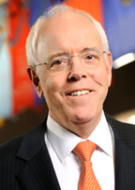 |
|
| Wright Caughman |
The Woodruff Health Sciences Center's publications are an outstanding source of news and information not only for our faculty, staff, and students, but also for the metro Atlanta community. Chris Larsen, John Fox, and I have recently decided to pursue a new strategic direction for two of our award-winning magazines—one that we think will help us share the Emory story with even more of our constituents. Going forward, we will combine Emory Health and Emory Medicine magazines into a single publication.
By combining the two publications into a single magazine, which will be titled Emory Medicine, we can achieve significant cost savings while at the same time doubling the number of issues we send to our alumni, eliminating brand confusion between the two magazines, and underscoring the closely aligned relationship between the School of Medicine and Emory Healthcare. The new publication will emphasize clinical content and will continue to include the research and academic content that help distinguish Emory's clinical service in the local marketplace and enhance our national reputation.
The members of the Health Sciences Communications team are working diligently on the first issue of the new magazine. Emory Medicine promises to be an informative and inspirational vehicle for sharing the WHSC story.
Please continue to share your thoughts and suggestions with me at evphafeedback@emory.edu.
 |
Almost $12 million for HIV study
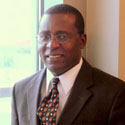 |
|
| Igho Ofotokun | |
 |
|
| Gina Wingood |
Igho Ofotokun (infectious diseases, medical school) and Gina Wingood (behavioral sciences and health education, Rollins School of Public Health) were awarded $11.9 million from NIH to study HIV in women. The award to Emory, in collaboration with Sister Love and other Atlanta community organizations, creates one of four new clinical research sites in the South and opens new opportunities to advance the Women's Interagency HIV Cohort Study, which was established by the NIH in 1993 with sites primarily in the Midwest and on the East and West coasts. Read more.
Yerkes receives $9.5 million to study oxytocin
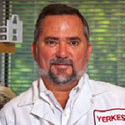 |
|
| Larry Young |
The Yerkes National Primate Research Center received a $9.5 million grant from the NIH to study oxytocin, a brain chemical known for forming bonds between mother and baby. The grant will establish the Silvio Conte Center in Neuroscience Research, the first NIH-center to explore how normal brain chemistry involved in bonding and attachment affects brain communication and social experiences in animals and humans. Larry Young, chief of Behavioral Neuroscience and Psychiatric Disorders at Yerkes, will direct the center. Read more.
Emory awards planning grants for school-based health centers
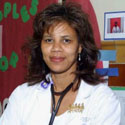 |
|
| Veda Johnson |
Veda Johnson, Emory pediatrician and director of the Pediatric Urban Health Program, has announced funding for additional planning grants to help ensure that more Georgia students have access to primary care. The most recent grants to five local school districts (in Clayton, DeKalb, Douglas, Randolph, and Taylor counties) are funded through a $3 million gift from the Zeist Foundation. The foundation grants are intended to help expand school-based health centers throughout the state. Read more.
Grady joins EUH on list of Advanced Comprehensive Stroke Centers
In July Grady Hospital's Marcus Stroke and Neuroscience Center was designated an Advanced Comprehensive Stroke Center by the Joint Commission, an independent accrediting agency for U.S. health care organizations. Emory University Hospital earned this same certification in April. The certification recognizes hospitals with state-of-the-art infrastructure, staff, and training to receive and treat patients with the most complex strokes. The Joint Commission requires such organizations to meet rigorous standards related to research, diagnosis, imaging, surgical procedures, inpatient care, and post-hospitalization care.
Add your likes and comments to SOM's new facebook page
 |
The medical school has joined facebook. "Like" the school to stay abreast of the latest research, clinical advances, and medical education. Also on facebook are the Rollins School of Public Health and the Nell Hodgson Woodruff School of Nursing.
Appointments
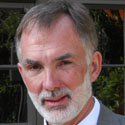 |
|
| Thomas Clasen |
Thomas Clasen was appointed the Rose Salamone Gangarosa Chair in Sanitation and Safe Water at the Rollins School of Public Health. He previously served on faculty at the London School of Hygiene and Tropical Medicine. Read more.
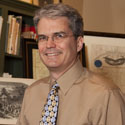 |
|
| Lance Waller |
Lance Waller (chair, biostatistics and bioinformatics, Rollins School of Public Health) was appointed interim chair of the medical school's Department of Biomedical Informatics and interim director of the Center for Comprehensive Informatics. He is a Rollins professor. He replaces Joel Saltz, founding chair of the medical school's biomedical informatics department, who has been named the founding chair of the Department of Biomedical Informatics at Stony Brook University.
Conversations with the provost
Provost Claire Sterk is holding a series of small-group discussions with faculty over the next three months. Medical faculty are invited for a session on Sept. 27, RSPH faculty on Oct. 21, and nursing faculty on Oct. 24. All-faculty sessions will be held on Sept. 26 and Nov. 11. Faculty are invited to register for one of these sessions at provost@emory.edu.
Events
Sept. 17: Health Innovation Symposium VI: Best Practices Supporting Interdisciplinary Innovation at Academic Health Centers, 4:30-6:30 p.m., EUH Auditorium. More info.
Sept. 30: Fall Forum on the Liberal Arts, with panelist Wright Caughman, 4:00-6:00 p.m., Cox Hall Ballroom. More info.
Sept. 30: Michael M.E. Johns Lecture on Health Policy, featuring Congressman Billy Tauzin, 5:00 p.m., CNR Building auditorium, RSPH.
Oct. 5: Winship Win the Fight 5K. Register.
Oct. 16: Emory Medicine 2014 annual address by Dean Chris Larsen, 4:30 p.m., WHSCAB auditorium, followed by reception on plaza.
Oct. 17: Department of Medicine Research Day, 8 a.m. - 4:30 p.m., Cox Hall Ballroom. Schedule and RSVP.
Oct. 30: 2013 EHC Quality Conference, 7:30 a.m. - 12 p.m., Cox Hall, 3rd floor ballroom.
